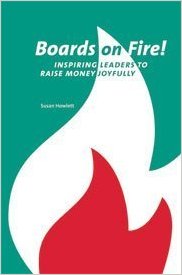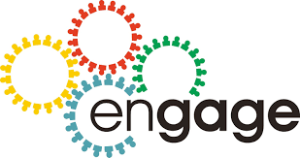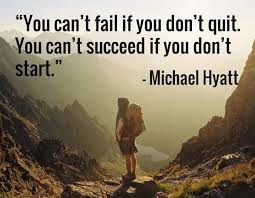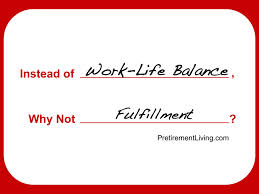 There is an old expression that says, “You need to dance with the person who brought you to the prom.” It essentially means you need to work with the person who got you where you’re at today in spite of the circumstances. When I think of this in terms of volunteer management (e.g. your board members and fundraising volunteers), it means you need to get the job done with those who you recruited.
There is an old expression that says, “You need to dance with the person who brought you to the prom.” It essentially means you need to work with the person who got you where you’re at today in spite of the circumstances. When I think of this in terms of volunteer management (e.g. your board members and fundraising volunteers), it means you need to get the job done with those who you recruited.
The implication of this interpretation is that your organization is only as effective as those who you recruited to do the work that needs to be accomplished (e.g. raising the necessary funds, governing the organization, etc). So, you need to be very careful at the beginning of any recruitment process and pay special attention during the identification and recruitment process to the traits, characteristics, skills and experiences that an effective volunteer will need for the organization to be successful in whatever it is trying to accomplish.
This begs the question . . . what is the difference between traits, characteristics, skills and experiences?
- A trait is something someone inherits or is born with
- A characteristic (e.g. quality) is something that describes someone
- A skill is something that someone has learned
- An experience is something someone has experienced
When I think of traits I’ve seen effective non-profit board members exhibit, I think of things such as:
- Detailed-oriented
- Focus
- Collaborative / Team-oriented
- Confident
- Communicator
- Decision-oriented
- Optimistic
- Accountable
Characteristics of effective board members in my opinion include someone who is:
- Mission-focused and passionate about what you do
- Eager to participate and ask questions
- A life-long learner
- Willing to contribute their time, talent and financial resources to your organization
- Socially engaged in the community with a large circle of friends and influence
When I think about skill sets, there are are many different ones that need to be present around your boardroom table, which is why diversity is so important. In other words, you won’t find people who possess ALL of the skills you need. The following are some of the skills you need to make sure find their way into your boardroom:
- Accounting & financial management
- Marketing & promotion
- Planning
- Sales, resource development, fundraising
- Insurance & risk management
- Facility management
- Assessment and evaluation
- Human resources
- Organizational development
- Management
Experience is a tricky consideration because you should be looking for individuals who have had successful experiences not just any experience. When I was in the business of identifying board volunteers, I looked for people who had successfully:
- Served on other boards
- Participated in fundraising activities
- Worked well with other people in team environments
- Managed other people
- Thrived in situations with deadlines and urgency
- Managed their time
- Been entrepreneurial and grown their own business
If I’ve seen it once, I’ve seen it often where non-profit volunteers look at their social networks and asked others to get involved based on the likelihood of getting a YES regardless of whether that person possessed many of the traits, characteristics, skills and experiences necessary for success.
This is usually a recipe for disaster because “you need to dance with the person who brought you.” Essentially, if you recruit the people lacking what you need to help govern your organization or raise money to operationalize your mission, it is next to impossible to make quick wholesale changes, which likely locks you into an undesirable outcome.
How does your organization integrate the aforementioned traits, characteristics, skills and experiences into a prospect identification, evaluation and recruitment process? What specific tools have you used that you found helpful? Are their any specific traits, characteristics, skills and experiences that I missed that you would add to the list?
Please use the comment box below to share your thoughts and experiences. We can all learn from each other.
Here’s to your health!
Erik Anderson
Founder & President, The Healthy Non-Profit LLC
www.thehealthynonprofit.com
erik@thehealthynonprofit.com
http://twitter.com/#!/eanderson847
http://www.facebook.com/eanderson847
http://www.linkedin.com/in/erikanderson847


 If your board is resistant to the idea of fundraising, I encourage you to first take a good hard look in the mirror and ask yourself the following questions:
If your board is resistant to the idea of fundraising, I encourage you to first take a good hard look in the mirror and ask yourself the following questions: As a young non-profit professional, who was just learning his craft, I was first introduced to the idea of a “house party” event format as a fundraising technique. The idea was simple. Ask someone to host a small party in their home. Work with them to identify a guest list of potential donors from their list of friends and colleagues. Make a group ask during the get together and collect pledge cards. My former employer used to call these “leadership circle” events.
As a young non-profit professional, who was just learning his craft, I was first introduced to the idea of a “house party” event format as a fundraising technique. The idea was simple. Ask someone to host a small party in their home. Work with them to identify a guest list of potential donors from their list of friends and colleagues. Make a group ask during the get together and collect pledge cards. My former employer used to call these “leadership circle” events. Last week’s experience helped me see house parties in a whole new light. No longer was this strategy simply a tool in a non-profit person’s resource development toolbox. The more I thought about it, the opportunities seemed to be endless. Here are just a few of my thoughts:
Last week’s experience helped me see house parties in a whole new light. No longer was this strategy simply a tool in a non-profit person’s resource development toolbox. The more I thought about it, the opportunities seemed to be endless. Here are just a few of my thoughts: Oh, well let me count the reasons . . .
Oh, well let me count the reasons . . . I have no idea why this is so scary for so many non-profit staff and board volunteers. It doesn’t have to be a confrontation. Here are a few talking points:
I have no idea why this is so scary for so many non-profit staff and board volunteers. It doesn’t have to be a confrontation. Here are a few talking points: If the reasons given by your board volunteer aren’t things beyond anyone’s control (e.g. family member illness, work-related challenges, etc) and they simply don’t feel comfortable with solicitation, then ask them to get heavily involved in cultivation (e.g. engaging new prospective supporters) and stewardship (e.g. showing existing donors gratitude and return on investment) activities. (Note: don’t simply let them focus on other non-fundraising activities like programming or marketing)
If the reasons given by your board volunteer aren’t things beyond anyone’s control (e.g. family member illness, work-related challenges, etc) and they simply don’t feel comfortable with solicitation, then ask them to get heavily involved in cultivation (e.g. engaging new prospective supporters) and stewardship (e.g. showing existing donors gratitude and return on investment) activities. (Note: don’t simply let them focus on other non-fundraising activities like programming or marketing) Sometimes we can’t fix the problem. Board members are people, too. Their parents get sick. Their marriages falter. They end up with a new boss who demands more from them.
Sometimes we can’t fix the problem. Board members are people, too. Their parents get sick. Their marriages falter. They end up with a new boss who demands more from them. I belong to a professional association and recently agreed to join their nominating committee to help the board of directors fill a few expiring board terms. This volunteer experience has made “board recruitment” top of mind for me over the last few weeks. I also can’t stop thinking about the various organizational structures and strategies/approaches to board recruitment. When this happens to me, I know there must be a blog post brewing.
I belong to a professional association and recently agreed to join their nominating committee to help the board of directors fill a few expiring board terms. This volunteer experience has made “board recruitment” top of mind for me over the last few weeks. I also can’t stop thinking about the various organizational structures and strategies/approaches to board recruitment. When this happens to me, I know there must be a blog post brewing. Do you know which skills and experiences are most important for a new board volunteer to possess in order to succeed on your board? Knowing this could help your organization conduct better prospecting exercises and result in better prospect recruitment lists. Today’s post is the third in a three part non-profit board development series that started last week. During this time, we focused on a recent survey released by our friends at non-profit
Do you know which skills and experiences are most important for a new board volunteer to possess in order to succeed on your board? Knowing this could help your organization conduct better prospecting exercises and result in better prospect recruitment lists. Today’s post is the third in a three part non-profit board development series that started last week. During this time, we focused on a recent survey released by our friends at non-profit 

 If you haven’t heard
If you haven’t heard  I am a member of GenX, and this news made my heart sing. I was so excited to hear that my Baby Boomer board could be transformed into that type of board. I came home from that conference with renewed focus and determination to figure out how tech can help my board become more engaged and efficient in governance.
I am a member of GenX, and this news made my heart sing. I was so excited to hear that my Baby Boomer board could be transformed into that type of board. I came home from that conference with renewed focus and determination to figure out how tech can help my board become more engaged and efficient in governance. When I read that only 25% of survey respondents identified “fundraising skills and experiences” as having a great impact on a board member’s success, I literally groaned and rolled by eyes.
When I read that only 25% of survey respondents identified “fundraising skills and experiences” as having a great impact on a board member’s success, I literally groaned and rolled by eyes. Do you know what is rattling around someone’s head during your non-profit board recruitment process? Knowing this could help you design a better process with better tools. This week and part of next week, we are focusing on a recent survey released by our friends at nonprofit
Do you know what is rattling around someone’s head during your non-profit board recruitment process? Knowing this could help you design a better process with better tools. This week and part of next week, we are focusing on a recent survey released by our friends at nonprofit 

 Most non-profit organizations have a very clear understanding of what they need from their board members, but there is a better question that needs to be asked. “Do you know what your board volunteers need from you?” This week and part of next week, we are focusing on board development questions at
Most non-profit organizations have a very clear understanding of what they need from their board members, but there is a better question that needs to be asked. “Do you know what your board volunteers need from you?” This week and part of next week, we are focusing on board development questions at 
 I think Oprah wrapped all of this up best when she said:
I think Oprah wrapped all of this up best when she said: Structure your board development process in a manner that allows the following to occur:
Structure your board development process in a manner that allows the following to occur: I cannot tell you how many boards I’ve worked with on board development and governance projects push back on the idea of year-end board member evaluations.
I cannot tell you how many boards I’ve worked with on board development and governance projects push back on the idea of year-end board member evaluations. Last night I had the privilege of being invited to a non-profit organization’s year-end holiday party stewardship event. In attendance were board members, capital campaign volunteers, auxiliary members, and various other stakeholders. There was no solicitation presentations, but there were a few powerful testimonials from alumni and lots of gratitude. The energy in the room was palpable, and I was reminded me of the old expression that “hope floats“. It was in this dynamic setting that I had an amazing conversation with someone about the power of leadership.
Last night I had the privilege of being invited to a non-profit organization’s year-end holiday party stewardship event. In attendance were board members, capital campaign volunteers, auxiliary members, and various other stakeholders. There was no solicitation presentations, but there were a few powerful testimonials from alumni and lots of gratitude. The energy in the room was palpable, and I was reminded me of the old expression that “hope floats“. It was in this dynamic setting that I had an amazing conversation with someone about the power of leadership. The following is a list of competencies and skill sets the search committee reviewed during its search criteria conversations:
The following is a list of competencies and skill sets the search committee reviewed during its search criteria conversations: A few weeks ago I facilitated a training session titled “2014 Finish Strong: Year-End Strategies” for a group of non-profit professionals in New Mexico. Long story short . . . there were LOTS of things that non-profits try to do in the fourth quarter. Participants shared with each other what they were doing back home at their agency and we collectively talked about best practices.
A few weeks ago I facilitated a training session titled “2014 Finish Strong: Year-End Strategies” for a group of non-profit professionals in New Mexico. Long story short . . . there were LOTS of things that non-profits try to do in the fourth quarter. Participants shared with each other what they were doing back home at their agency and we collectively talked about best practices.